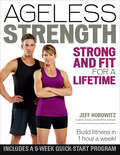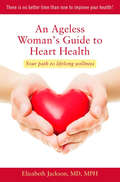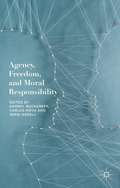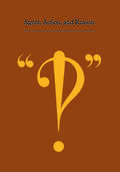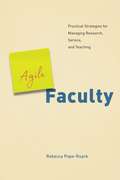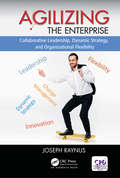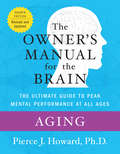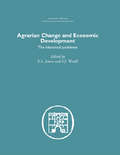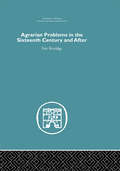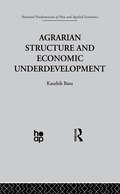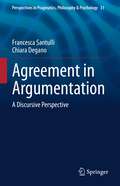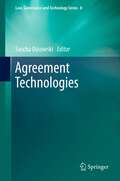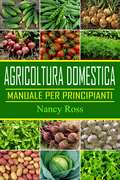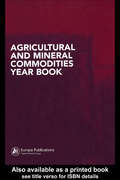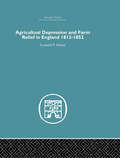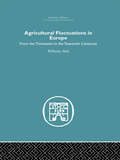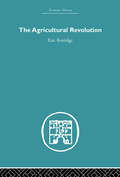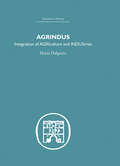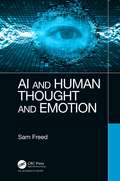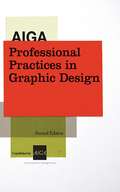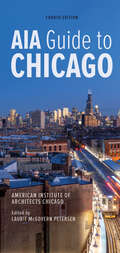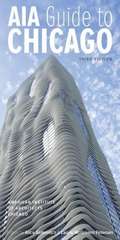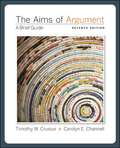- Table View
- List View
Ageless Strength: Strong and Fit for a Lifetime
by Jeff HorowitzAgeless Strength shows athletes and active people how to build sustainable fitness for a lifetime of active pursuits. It’s a myth that our older years only bring physical decline. While it’s true that we lose strength, bone density, and balance, our bodies react the same way to training at any age. The answer is not to go easy on our so-called fragile bodiesthat traditional approach of gentle, easy fitness just guarantees loss. The key is to push our bodies in the right ways. A smart mix of strength training can counteract the physical effects of agingand keep you strong and fit for years. With the program in Ageless Strength, you can get into the best shape of your life at any age. In his proven program, coach and trainer Jeff Horowitz reveals exercises that fight back against the years. His dynamic and engaging mix of 50 simple strength exercises will build strength, bone, and balancecombating the top three physical changes that lead to injury and loss of strength. These effective exercises use bodyweight or minimal equipment so that no gym membership is required. Each functional strength move mimics a real-life motion so you’ll know it will help your day-to-day fitness. The 6-week quick-start program will get you up to speed, then you can follow the long-term strength program or select from the color-coded exercises to design your own. In just two 30-minute sessions a week, Ageless Strength offers a simple, effective way to get strong and fit for a lifetime of active pursuits.
An Ageless Woman's Guide to Heart Health
by Elizabeth JacksonHeart disease has long been thought of as a men's issue, when it is actually the leading cause of death in both men and women. In fact, since 1984, more American women than men have died of heart disease. Are you surprised?.Often at the helm of their family's overall health, diet, and nutrition, a woman and her lifestyle decisions can affect not only her own wellbeing; they can determine the habits of her partner and children as well. By becoming better educated, a woman can have a profound, permanent impact on the health of the people around her..An Ageless Woman's Guide to Heart Health is every woman's guidebook to enjoying a heart-healthy life. Renowned cardiologist Dr. Lisa Jackson shares tips and resources to help you make positive steps toward improving your health. Whether you're younger or older, fit or ailing, it's never too late to make changes in your life that can lead you-and those you love-to a healthier heart.
An Ageless Woman's Guide to Heart Health
by Elizabeth JacksonHeart disease has long been thought of as a men's issue, when it is actually the leading cause of death in both men and women. In fact, since 1984, more American women than men have died of heart disease. Are you surprised?.Often at the helm of their family's overall health, diet, and nutrition, a woman and her lifestyle decisions can affect not only her own wellbeing; they can determine the habits of her partner and children as well. By becoming better educated, a woman can have a profound, permanent impact on the health of the people around her..An Ageless Woman's Guide to Heart Health is every woman's guidebook to enjoying a heart-healthy life. Renowned cardiologist Dr. Lisa Jackson shares tips and resources to help you make positive steps toward improving your health. Whether you're younger or older, fit or ailing, it's never too late to make changes in your life that can lead you-and those you love-to a healthier heart.
Agency, Freedom, and Moral Responsibility
by Sergi Rosell Carlos Moya Andrei BuckareffIn recent years there has been a resurgence of interest in problems related to human agency and responsibility by philosophers and researchers in cognate disciplines. The present volume brings together original contributions by leading specialists working in this vital field of philosophical inquiry. The contents represent the state of the art of philosophical research on intentional agency, free will, and moral responsibility. The volume begins with chapters on the metaphysics of agency and moves to chapters examining various problems of luck. The final two sections have a normative focus, with the first of the two containing chapters examining issues related to responsible agency and blame and the chapters in the final section examine responsibility and relationships. This book will be of interest to researchers and students interested in both metaphysical and normative issues related to human agency.
Agent, Action, and Reason
by R. N. Bronaugh Robert W. Binkley Ausonio MarrasThis volume contains the papers and commentaries presented at the fourth philosophy colloquium at the University of Western Ontario in November 1968. The papers examine, from different points of view, the central problems in the philosophy of action. They include: "Agency" by Donald Davidson with comments by James Cornman; "On the Logic on International Action" by Roderick Chisholm with comments by Bruce Aune and a reply by Roderick Chisholm; "Wanting: Some Pitfalls" by R.M. Hare with comments by David Gauthier and D.F. Pears; "Two Problems about Reasons for Actions" by D.F. Pears with comments by Irving Thalberg. Also included is an extensive bibliography of recent work in the philosophy of action. The contributors are all well known for their work in this branch of philosophy; their papers present a cross section of the best work being done in the area at the present time.
Agile Faculty: Practical Strategies for Managing Research, Service, and Teaching
by Rebecca Pope-RuarkDigital tools have long been a transformative part of academia, enhancing the classroom and changing the way we teach. Yet there is a way that academia may be able to benefit more from the digital revolution: by adopting the project management techniques used by software developers. Agile work strategies are a staple of the software development world, developed out of the need to be flexible and responsive to fast-paced change at times when “business as usual” could not work. These techniques call for breaking projects into phases and short-term goals, managing assignments collectively, and tracking progress openly. Agile Faculty is a comprehensive roadmap for scholars who want to incorporate Agile practices into all aspects of their academic careers, be it research, service, or teaching. Rebecca Pope-Ruark covers the basic principles of Scrum, one of the most widely used models, and then through individual chapters shows how to apply that framework to everything from individual research to running faculty committees to overseeing student class work. Practical and forward-thinking, Agile Faculty will help readers not only manage their time and projects but also foster productivity, balance, and personal and professional growth.
Agilizing the Enterprise
by Joseph RaynusAre you still searching for the workplace that deserves someone like you? Do you really have a good understanding about what is going on out there, in the business world? In this book, we will discuss the importance of agility and how it affects the solutions that are being delivered by an organization. We will also talk about how a blend of strategic innovation, visionary leadership, and organizational agility go hand in hand to ensure the success of an organization. Enterprise agility is not a far-fetched possibility. Once the problems of the organization are identified, with the right tools and effort, the agility, efficiency, and effectiveness of an organization, as well as the processes that the success of the organization are based on, can all be maximized. This book will broaden your thinking and will help you expand your horizons.
Aging: The Owner's Manual
by Pierce HowardCutting-edge, user-friendly, and comprehensive: the revolutionary guide to the brain, now fully revised and updatedAt birth each of us is given the most powerful and complex tool of all time: the human brain. And yet, as we well know, it doesn't come with an owner's manual--until now. In this unsurpassed resource, Dr. Pierce J. Howard and his team distill the very latest research and clearly explain the practical, real-world applications to our daily lives. Drawing from the frontiers of psychology, neurobiology, and cognitive science, yet organized and written for maximum usability, The Owner's Manual for the Brain, Fourth Edition, is your comprehensive guide to optimum mental performance and well-being. It should be on every thinking person's bookshelf. What are the ingredients of happiness? Which are the best remedies for headaches and migraines? How can we master creativity, focus, decision making, and willpower? What are the best brain foods? How is it possible to boost memory and intelligence? What is the secret to getting a good night's sleep? How can you positively manage depression, anxiety, addiction, and other disorders? What is the impact of nutrition, stress, and exercise on the brain? Is personality hard-wired or fluid? What are the best strategies when recovering from trauma and loss? How do moods and emotions interact? What is the ideal learning environment for children? How do love, humor, music, friendship, and nature contribute to well-being? Are there ways of reducing negative traits such as aggression, short-temperedness, or irritability? What is the recommended treatment for concussions? Can you delay or prevent Alzheimer's and dementia? What are the most important ingredients to a successful marriage and family? What do the world's most effective managers know about leadership, motivation, and persuasion? Plus 1,000s more topics!
Agrarian Change and Economic Development: The Historical Problems
by E. L. Jones S. J. WoolfAgrarian Change and Economic Development is a landmark volume that examines the historical experience of the relationship between agrarian change and economic development. Because agriculture was until recently man's dominant occupation, scholars have traditionally drawn little attention to its immense historical importance. The essays in this book redress this balance, and illustrate the significance of the western world's escape from an overwhelmingly agrarian condition. It is therefore an ideal work for encouraging those concerned with current problems to perceive agricultural development as professional historians see it, and to question the oversimplified historical analogies commonly employed in development economics. Presenting historical examples of change within particular agricultural systems, and discussing their implications for national economic development, both social scientists and planners less concerned with historical revision will have equal reason to welcome these case studies of the long-run interaction of agrarian change and economic activity. This classic book was first published in 1969.
Agrarian Problems in the Sixteenth Century and After
by Eric KerridgePresenting a full and precise description of all legal ties between landlord and tenant in early modern England, Agrarian Problems in the Sixteenth Century and After re-examines one of the key issues in English agrarian history - the question of the legal security of the copyholder. Comparing historical records and literary evidence, Agrarian Problems in the Sixteenth Century and After reprints much of the important 1969 edition of the book, and asserts that: * customary tenants enjoyed legal security in and before the sixteenth century * enclosures proceeded legally, without oppression, and in much the same form (whether ratified in parliament or not) throughout the whole period * depopulation was less extensive than sometimes supposed and that such depopulation as there was often proved economically profitable and not without social benefit. When first published in 1969, this fascinating book represented a unique viewpoint that affected, and in some cases reversed, much accepted opinion. As a landmark work in a highly important area of English agrarian history, it still has considerable impact today.
Agrarian Structure and Economic Underdevelopment
by K. BasuKaushik Basu (Cornell University) explores the relation between agrarian institutions and economic development.
Agreement in Argumentation: A Discursive Perspective (Perspectives in Pragmatics, Philosophy & Psychology #31)
by Francesca Santulli Chiara DeganoThis book explores the construction of agreement in the argumentative process, aiming to investigate how the activation of shared knowledge, values and beliefs leads to the creation of a common ground between the speaker and the audience in the pursuit of persuasion. In the first part of the book, the authors examine agreement from a historical and theoretical perspective, setting in relation major ancient and contemporary approaches to argumentation, with special regard for the notions of ethos, objects of agreement, starting points and topoi, all with a focus on their deployment in discourse. This is complemented with a compendium of linguistic resources that can be exploited for the discursive construction of agreement, offering a principled selection of structures across different levels of language description. The second part of the book is devoted to the investigation of actual uses of agreement in a choice of institutional genres within the domain of the US presidential elections: the Presidential Announcement, the TV debate and the Inaugural Address. Due to their political relevance and cultural salience, these genres provide an ideal interface for observing the interplay of discursive and argumentative components, against the backdrop of a shared cultural heritage, rich with intertextual references. The application of the theoretical framework developed in the first part of the book to the analysis of real political discourse carried out in the second is the distinguishing feature of this volume, making it of interest to linguists and argumentation scholars, as well as to political scientists and communicators.
Agreement Technologies: Second International Conference, At 2013, Beijing, China, August 1-2, 2013. Proceedings (Law, Governance and Technology Series #8)
by Sascha OssowskiMore and more transactions, whether in business or related to leisure activities, are mediated automatically by computers and computer networks, and this trend is having a significant impact on the conception and design of new computer applications. The next generation of these applications will be based on software agents to which increasingly complex tasks can be delegated, and which interact with each other in sophisticated ways so as to forge agreements in the interest of their human users. The wide variety of technologies supporting this vision is the subject of this volume. It summarises the European Cooperation in Science and Technology (COST) Action project on Agreement Technologies (AT), during which approximately 200 researchers from 25 European countries, along with eight institutions from non-COST countries, cooperated as part of a number of working groups. The book is the first to provide a comprehensive overview of the emerging field of Agreement Technologies, written and coordinated by the leading researchers in the field. The results set out here are due for wide dissemination beyond the computer technology sector, involving law and social science as well.
Agricoltura domestica: Manuale per principianti
by Nancy Ross D. PortaL'agricoltura domestica è un'attività sana per il corpo e per la mente, è il sogno di chi vive in città e ha bisogno di una pausa dalla frenesia quotidiana. È la scelta ideale per chi desidera un po' di salutare divertimento che abbia anche dei riscontri pratici e dei vantaggi economici.
Agricultural and Mineral Commodities Year Book
by Europa PublicationsAn in-depth survey of the major commodities of the world* Profiles each commodity in detail* Provides in-depth statistics on production* Includes an invaluable directoryContents:* Introductory essays* Covers all major agricultural and mineral products including aluminium, coal, cotton, nickel, petroleum, bananas, rice, rubber, tea, coffee, tobacco, wheat, natural gas, soybeans, zinc, lead and phosphates* Each commodity is profiled in detail with information on physical appearance, history, uses, major markets, trends in demand, major importers and exporters* Statistical details of recent levels of production at a global and individual country level* Recent trends in prices with indexes of export prices* A directory of organizations concerned with commodities.
Agricultural Depression and Farm Relief in England 1813-1852
by Leonard P. AdamsThis book was first published in 1932.
Agricultural Fluctuations in Europe: From the Thirteenth to twentieth centuries
by Wilhelm AbelWilhelm Abel's study of economic fluctuations over a period of seven hundred years has long been established as a core text in European agricultural history. Professor Abel was one of the first economic historians to make extensive use of statistical data, and his scholarship and approach have had a decisive effect on the orientation of economic and agricultural history. Using data on population, wages and rents from England, France, Germany and the Low Countries, and, on occasion, from Italy, Scandinavia and Poland, here Professor Abel demonstrates the striking similarity in the overall economic development for all these areas. He also analyses, the short-term fluctuations that have affected agricultural development within this economic framework, and is able to show the broad significance of the shape of the late medieval depression, the scale of the desertions of villages that accompanies it, and the implications of the sixteenth century price revolution. The book's importance lies in tracing the long-term trends that have characterized European economic development since the High Middle Ages, and as such it has made an invaluable contribution to all comparative analyses of different Western European countries since it was first published in 1980.
The Agricultural Revolution
by Eric KerridgeFirst Published in 2005. Routledge is an imprint of Taylor & Francis, an informa company.
Agrindus: Integration of AGRIculture and INDUStries
by Haim HalperimThis is a fascinating insight into some of the most important thinking of the industrial revolution in Israel. Technological revolution, rapid industrialization and higher levels of productivity all drew more and more people from the agricultural workforce and new ideas were needed to combat this serious loss of labour. At the time this book was first published, Professor Halperim's had somthing new and original to offer. He argued that agriculture could be combined with industry without undermining that age-old social asset, the village community, and bring it into line with changing conditions. As he predicted the development of areas comprising a score or more of villages, ranging around non-agriculture has been preserved, and rural society has continued to exist although it has assumed different forms. The name proposed by the author for this new formation is Agrindus, as it expresses the integration of AGRiculture and INDUStries.
AI and Human Thought and Emotion
by Sam FreedThe field of artificial intelligence (AI) has grown dramatically in recent decades from niche expert systems to the current myriad of deep machine learning applications that include personal assistants, natural-language interfaces, and medical, financial, and traffic management systems. This boom in AI engineering masks the fact that all current AI systems are based on two fundamental ideas: mathematics (logic and statistics, from the 19th century), and a grossly simplified understanding of biology (mainly neurons, as understood in 1943). This book explores other fundamental ideas that have the potential to make AI more anthropomorphic. Most books on AI are technical and do not consider the humanities. Most books in the humanities treat technology in a similar manner. AI and Human Thought and Emotion, however is about AI, how academics, researchers, scientists, and practitioners came to think about AI the way they do, and how they can think about it afresh with a humanities-based perspective. The book walks a middle line to share insights between the humanities and technology. It starts with philosophy and the history of ideas and goes all the way to usable algorithms. Central to this work are the concepts of introspection, which is how consciousness is viewed, and consciousness, which is accessible to humans as they reflect on their own experience. The main argument of this book is that AI based on introspection and emotion can produce more human-like AI. To discover the connections among emotion, introspection, and AI, the book travels far from technology into the humanities and then returns with concrete examples of new algorithms. At times philosophical, historical, and technical, this exploration of human emotion and thinking poses questions and provides answers about the future of AI.
AIGA Professional Practices in Graphic Design
by Tad Crawford"Provides definitive guidelines on all aspects of the graphic design business."-FYI. * Newly revised and expanded version of an industry classic--5,000 sold! * Up-to-the-minute! Includes web, interactive, and green design, new legislation * Each chapter written by an authority on the subject. Here's the definitive guide to professional business practices in graphic design, now fully revised and updated for the digital age. Up-to-the-minute coverage of web, interactive, and motion graphics; green design; potential repercussions of legislation on Orphan Works; protection of fonts and software; managing creative people; using professional help such as lawyers; and much more. Each in-depth chapter, covering such topics as professional relationships, fees, contracts, managing large projects, copyright and trademark issues, electronic uses, and more, has been written by an authority in the field. The newly revised AIGA Standard Form for Design Services is included for the convenience of readers, along with a complete resources section. No designer should do business without this comprehensive, authoritative book.
AIA Guide to Chicago
by American Institute of Architects ChicagoChicago’s architecture attracts visitors from around the globe. The fourth edition of the AIA Guide to Chicago is the best portable resource for exploring this most breathtaking and dynamic of cityscapes. The editors offer entries on new destinations like the Riverwalk, the St. Regis Chicago, and The 606 as well as updated descriptions of Willis Tower and other refreshed landmarks. Thirty-four maps and over 500 photos make it easy to find each of the almost 2000 featured sites. A special insert, new to this edition, showcases the variety of Chicago architecture with over 80 full-color images arranged chronologically. A comprehensive index organizes entries by name and architect. Sumptuously detailed and user friendly, the AIA Guide to Chicago encourages travelers and residents alike to explore the many diverse neighborhoods of one of the world’s great architectural destinations.
AIA Guide to Chicago
by Geoffrey Baer Alice Sinkevitch American Institute of Architects Chicago Laurie Mcgovern Petersen Perry DuisAn unparalleled architectural powerhouse, Chicago offers visitors and natives alike a panorama of styles and forms. The third edition of the AIA Guide to Chicago brings readers up to date on ten years of dynamic changes with new entries on smaller projects as well as showcases like the Aqua building, Trump Tower, and Millennium Park. Four hundred photos and thirty-four specially commissioned maps make it easy to find each of the one thousand-plus featured buildings, while a comprehensive index organizes buildings by name and architect. This edition also features an introduction providing an indispensable overview of Chicago's architectural history.
The Aimee Leduc Companion: A Guide to Cara Black's Paris
by Cara Black Phil GaskillThis is the perfect guide to Paris for armchair travelers and the ultimate companion to Cara Black's bestselling Aimée Leduc series. For newcomers and old fans alike, this companion will bring you up to speed on previous books in the series. Tour the arrondissements of Paris with interactive maps that show not only places featured in the twelve books of the series, but Cara's favorite cafes, bistros, and shops in Paris, and various other nooks and crannies of the City of Lights.
The Aims of Argument: A Brief Guide
by Timothy W. Crusius Carolyn E. ChannellThe Aims of Argument, a comprehensive text for teaching argument, recognizes that people argue with a range of purposes in mind: to inquire, to convince, to persuade, and to negotiate. It offers a clear, logical learning sequence rather than merely a collection of assignments: inquiry is the search for truth, what we call an earned opinion, which then becomes the basis of efforts to convince others to accept our earned opinions. Case-making, the essence of convincing, is then carried over into learning how to persuade, which, requires explicit attention to appeals to character, emotion, and style. Finally, the previous three aims all play roles in negotiation, which amounts to finding and defending positions capable of appealing to all sides in a dispute or controversy.
